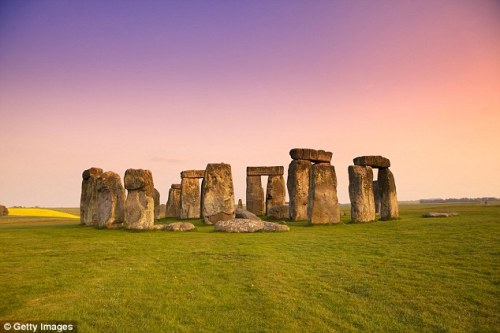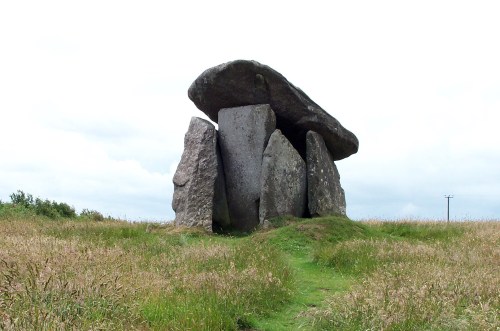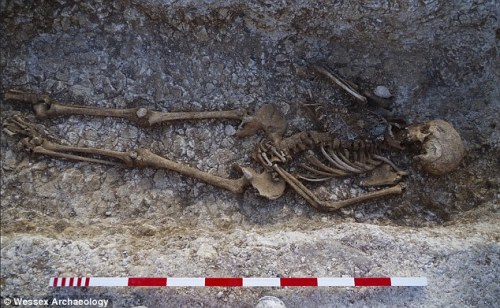- The large complex was found in a city around 1.5 miles from Stonehenge
- The 656 foot diameter complex consists of around 3,000 feet of ditches
- Around 300 feet (100 metres) of the ditches have been excavated so far
- Evidence of cattle bones, ceramic dishes and human remains were found
A new discovery could help shed light on why the mysterious Stonehenge was built.

A new discovery could help shed light on why the mysterious Stonehenge was built. The large complex, found in a city around 1.5 miles (2.4 km) from the famous stone circle, is thought to date back more than 1,000 years before Stonehenge (pictured) Daily Mail
The large complex, found in a city around 1.5 miles (2.4 km) from the famous stone circle, is thought to date back more than 1,000 years before Stonehenge.
The researchers say the complex was a sacred place where Neolithic people performed ceremonies, including feasting and the deliberate smashing of ceramic bowls.
The new discovery shows the entire area around Stonehenge was even more sacred and ritually active than archaeologists had thought, hundreds of years before Stonehenge appeared.
The complex was built about 5,650 years ago, around 3650 BC, more than 1,000 years before the stones of Stonehenge were erected.
The 656 foot (200 metre) diameter complex consists of around 3,000 feet (950 metres) of ditches and is the first major early Neolithic monument discovered in the Stonehenge area for more than a century.
It was discovered in a village called Larkhill in Wiltshire, just 1.5 miles (2.4 km) north east of the famous site.
A group of archaeologists found the site after the UK Ministry of Defence was preparing to build British Army houses on the land.
The researchers, led by Wessex Archaeology, found evidence of cattle bones, ceramic dishes and human remains.
Freshly broken pottery, dumps of worked flint and even a large stone saddle quern used to turn grain into flour were also found.
The researchers will now test the remains of the the findings, including the ceramic bowls, to try to determine what they were used for.
Each bowl could have held up to 10.5 pints (six litres) of beverage or partially liquid food, potentially a broth.
‘The newly found site is one of the most exciting discoveries in the Stonehenge landscape that archaeologists have ever made,’ a prehistorian from Wessex Archaeology said.
‘These discoveries are changing the way we think about prehistoric Wiltshire and about the Stonehenge landscape in particular,’ said Martin Brown, Principal Archaeologist for WYG, consultancy company WYG, which is leading the Larkhill housing development.
‘The Neolithic people whose monuments we are exploring shaped the world we inhabit: They were the first farmers and the first people who settled down in this landscape, setting us on the path to the modern world.
‘It is an enormous privilege to hold their tools and investigate their lives.’
Around 300 feet (100 metres) of the ditches have been excavated so far.
Read the full article in the Daily Mail. written by ABIGAIL BEALL
Wessex Guided Tours
The Best Tours in British History
http://www.HisTOURies.co.uk
 Trethevy Quoit © David Gill
Trethevy Quoit © David Gill 
 They range in size from stumps barely visible in the turf through to slender pillars standing nearly 2.5m tall (plus another metre or more below gound) with the largest weighing between 2 and 3 tonnes.
They range in size from stumps barely visible in the turf through to slender pillars standing nearly 2.5m tall (plus another metre or more below gound) with the largest weighing between 2 and 3 tonnes. witness the most famous of these – the Summer Solstice Sunrise on June 21st.
witness the most famous of these – the Summer Solstice Sunrise on June 21st.